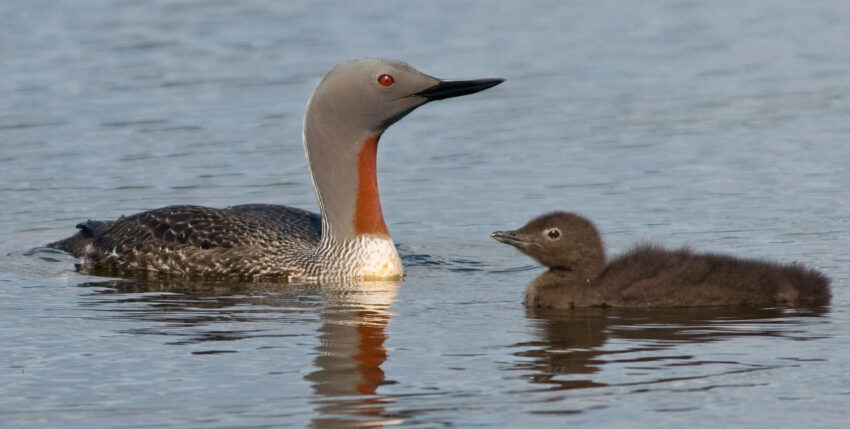The "Jordsand Association for the Protection of Seabirds and Nature e. V." from Ahrensburg (Stormarn district) has been honouring a seabird species that exemplifies a specific problem every year since 2014.
In 2024, it is the red-throated diver, which, like many other seabirds, is particularly threatened by the numerous wind turbines in the sea.
Red List
The red-throated diver is the smallest representative of the loon species and is listed as a highly endangered migratory bird species in Germany. According to the association's chairman, the intensive expansion of offshore wind power over the past ten years is a "serious burden" for the red-throated diver, as it avoids the wind farm areas within a radius of around ten kilometres. Because of the wind farms, they have to look for food in other places and may even have to fly longer distances. This is because the shy birds need a shallow water depth for optimum hunting.
Ornithology
The red-throated diver owes its name to the white, star-like speckles on its grey winter plumage and its diving search for food. They spend the year in Scandinavia, northern Russia, Svalbard and Greenland, where they also breed. The birds then come to the temperate regions of the North and Baltic Seas to spend the winter.
Habitat
Up to 20 per cent of the European wintering population is found in the German North Sea, making this marine area an "internationally important resting area", according to the Jordsand association. The large-scale expansion of wind turbines in the wintering areas in the North Sea is reducing the available habitat between the wind farms. This leads to increased stress levels for the red-throated divers due to competition for habitat and food. In addition to the red-throated diver, other seabird species such as the common guillemot and the northern gannet also avoid the areas around offshore wind farms.
Environmental awareness
The Jordsand association is therefore calling for more caution when expanding this form of renewable energy. When designating areas for offshore wind farms, there is often an overlap with the distribution areas of seabird species living close to the coast, such as the red-throated diver, which reacts very sensitively to disturbance. "Protected areas" must be kept clear over a wide area, otherwise we will have solved the climate crisis to some extent with wind farms, but massively exacerbated the biodiversity crisis, according to the association. On the Baltic coast, gillnet fishing is another threat to red-throated divers, which often end up as "by-catch". Here too, bird conservationists are calling for a rethink.
Nature conservation organisation
The Jordsand Association has been committed to the protection of seabirds and their habitats on the North Sea and Baltic coasts since 1907. It looks after over 20 protected areas from Heligoland to the North Frisian and Hamburg Wadden Sea and the Lower Elbe, to the Schleswig-Holstein and Western Pomeranian Baltic coast around Rügen.
More information, including on the seabirds, can be found here>>> [button link="https://www.jordsand.de/" newwindow="yes"] Link to the website of the Jordsand association[/button]
Source: ndr.de










